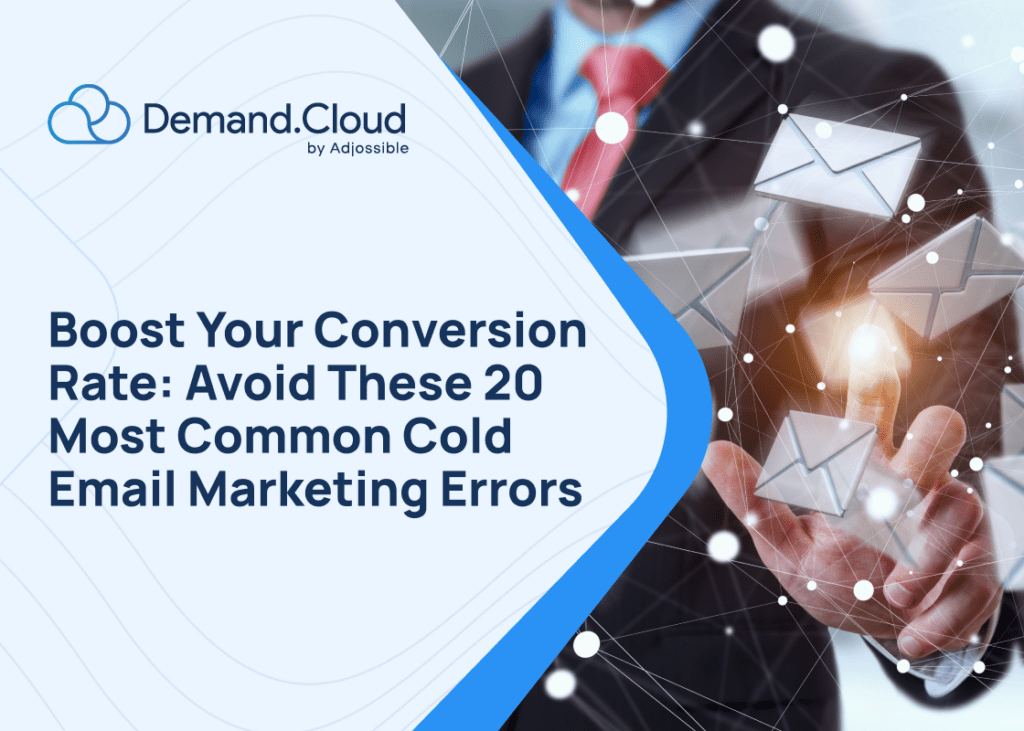Conversions are the heart and soul of any online business. Your website is nothing more than a digital brochure without them. The goal is to increase the recipients’ conversion rate to customers, subscribers, or other desired outcomes.
Cold emailing can be a great way to connect with potential customers, but if you make mistakes, your conversion rate may suffer.
So, how do you make sure your conversion rate is as high as possible? In this blog, we’ll outline the top 20 cold email marketing mistakes and how to avoid them.
4 Essential Cold Email Marketing Metrics
You’ve probably heard the saying that “the fortune is in the follow-up.” Well, the same goes for email marketing. Even if you have a stellar lead generation campaign, if your emails don’t follow through, you’re not going to see the results you’re hoping for. But how can you tell if your email marketing efforts are paying off? These four essential cold email marketing metrics will help you track and improve your performance.
1. Bounce Rate
One of the first things you should look at is your bounce rate. This metric tells you how many emails bounced back from recipients' inboxes, as opposed to being opened. A high bounce rate can indicate that your email campaign is failing to engage recipients or that there are communication issues with your email template. Try to aim for a bounce rate of less than 10%.
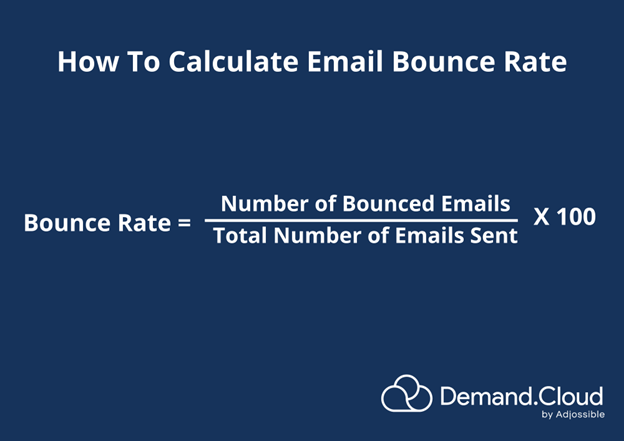
Example: You have sent out 2000 emails. 198 of those bounced. The calculation would be as follows: BR = 198 / 2000 X 100 = 9.9%
2. Open Rate
Another important metric to watch is your open rate. This measures how many emails were opened by recipients. A high open rate indicates that your email campaigns are engaging and interesting, and may result in leads being brought into your sales process. Try to aim for an open rate of at least 50%.
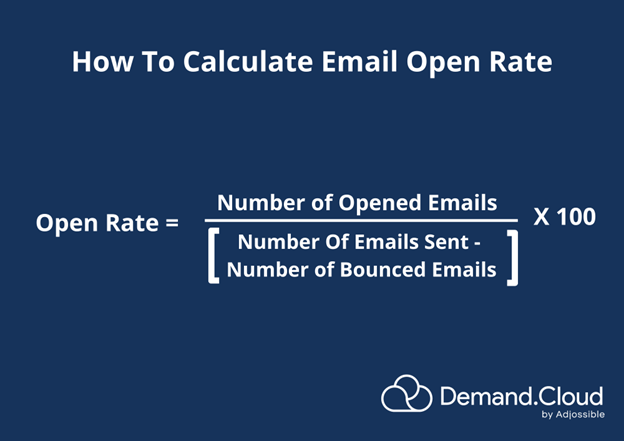
Example: You have sent out 2000 emails. 198 of those bounced and 982 were opened. The calculation would be as follows: OR = 982 / (2000 - 198 ) X 100 = 54.49%
3. Response Rate
This measure tells you how many people responded to your email campaign (either by clicking through to a landing page or submitting a form). A high response rate indicates that you're getting good engagement from your email content, which may be leading to more conversions down the road. Try to aim for a response rate of at least 25%.
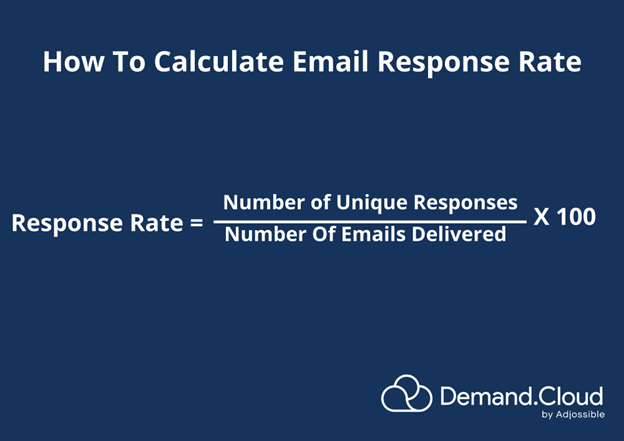
Example: You now have 1802 unique emails in your inbox. There were 414 responses. The calculation would be as follows: RR = 414/ 1802 X 100 = 22.97%
4. Conversion Rate
This metric tells you how many leads turned into sales. A high conversion rate indicates that your email campaigns are driving conversions, which is good news for your business. Try to aim for a conversion rate of at least 5%.
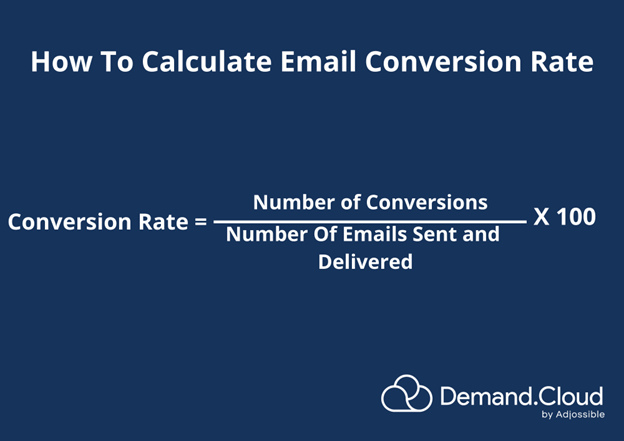
Example: You have 146 conversions out of 1802 successfully delivered emails. The calculation is as follows: CR = 146 / 1802 X 100 = 8.10%
20 Cold Email Marketing Mistakes And How To Avoid Them
1. Getting Low-Quality Leads
One of the most common mistakes made in cold email marketing is getting low-quality leads. Oftentimes, businesses will purchase lists of email addresses from third-party providers without taking the time to verify the accuracy of the information. As a result, they end up sending their messages to invalid or inactive accounts. In addition, businesses may also target individuals who are not interested in their products or services. While it may be tempting to cast a wide net in an effort to reach as many potential customers as possible, this approach is likely to result in a high number of unqualified leads. Make sure that you're targeting the right people with your email campaigns, and make sure that your email content is high quality. How to avoid this? You should focus on generating quality leads by verifying contact information and carefully targeting your audience. With a little extra effort, businesses can ensure that their cold email marketing efforts are more successful.
2. Including A Large Number Of Links Or Sending Broken Links
Including too many links in your email can come across as desperate or spammy, and it can overwhelm the reader. And sending broken links can frustrate readers and make them less likely to visit your website. How to avoid this? You have to focus on quality over quantity by including just a few relevant links and be sure to test your links before you send your email to ensure that they work correctly.
3. Excessive Message Sending Per Day
There's a fine line between keeping your prospects engaged and becoming a nuisance. Sending more than a handful of messages per day is generally considered to be excessive and will likely result in your messages being marked as spam. Not only will this hurt your deliverability, but it will also damage your reputation and make it difficult to build positive relationships with potential customers. So, when in doubt, send fewer rather than more messages. Excessive message sending is one of the quickest ways to sabotage your chances of success with cold email marketing. How to avoid this? When starting out, it's best to keep an eye on your message volume. You can slowly warm up by sending a low number of emails and then gradually increase over time as needed for the domain or email address you are setting up with hosting services like Gmail etc... The warming process typically lasts anywhere between 30-90 days but this will vary depending upon how often messages get sent from that particular account during its first few weeks in operation
4. Being overly informal or formal
In the world of business, first impressions matter. This is especially true when it comes to cold email marketing. If your emails are too informal, you run the risk of coming across as unprofessional. On the other hand, if they're too formal, you may come across as stuffy or out of touch. How to avoid this? You have to find the perfect balance. The key is to find a tone that is both professional and personable. After all, you're trying to build a relationship with your potential customers, not alienate them. So take the time to find a tone that feels natural and authentic. It will make all the difference in your cold email marketing campaign.
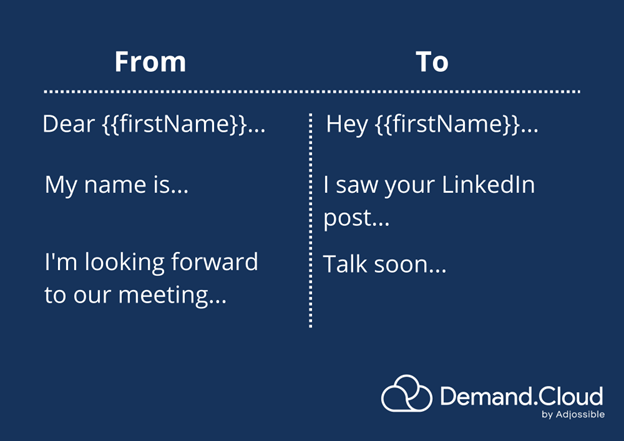
5. Irrelevant Subject Lines
Using irrelevant or unrelated subject lines in cold emails can be a major turn-off for recipients, and it can damage the sender's reputation. As a result, the emails are immediately deleted or ignored. How to avoid this? Your subject line is the first thing that recipients will see, so it needs to be attention-grabbing and relevant to the rest of your email. Make sure that you will craft a subject line that accurately reflects the contents of your message. With a little effort, you can ensure that your cold emails are opened and read - instead of being immediately deleted.
6. Copy of the Message Is Irrelevant to the Market
Sending out generic messages that are completely irrelevant to your target market will result in recipients being much less likely to engage with the message or take any action. How to avoid this? To be successful in cold email marketing, it's important to send messages that are tailored to the specific needs and interests of your target audience. Only then will you be able to grab their attention and make a lasting impression.
7. Self-Serving Messages to Prospects
No one likes a self-centered message. Especially when you're trying to build a relationship with a new customer. So, avoid making your prospect feel like they're reading your diary by writing cold emails that focus on you, your company, and your products. How to avoid this? Make sure that your messages are focused on the potential customer's needs, not on your own self-serving objectives. For example, instead of saying "I'm the best cold emailer in the business," try "You'll be amazed at how much our cold email services can improve your response rate." See the difference? The second message is all about the prospect, not you. It's focused on what they need, not what you have to offer. So keep that in mind the next time you're crafting a cold email. Put yourself in their shoes and think about what would make them want to respond to your message. And most importantly, avoid sounding self-serving. It won't win you any points with your prospects.

8. Too many CTAs, or none at all
One of the biggest mistakes you can make is to include too many CTAs, or none at all. Your goal should be to strike a balance between providing enough information to pique the reader's interest, and not overwhelming them with too many options. How to avoid this? Instead of bombarding the reader with CTAs, try to offer something of value that will earn their attention and trust. For example, you could provide a helpful tip, share an interesting article, or invite them to attend an event. By taking this approach, you'll be much more likely to succeed in your cold email marketing efforts.
9. Lack of Value
Sending generic, mass-produced emails that offer no value to the recipient. These types of emails are easy to spot, and they're immediately deletable. How to avoid this? You need to make your email personal and relevant to the recipient. Take the time to research your target audience and craft an email that will appeal to their needs and interests.
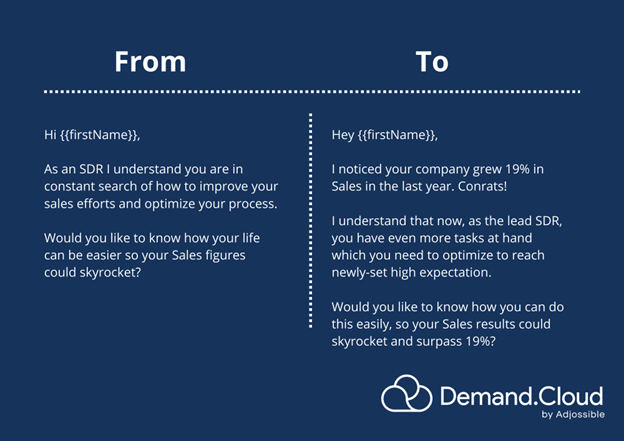
10. Excessive Text Length
If you're like most people, you probably hate getting cold emails. You know, the ones that are way too long, and full of fluffy language that doesn't really say anything. Well, it turns out that those types of emails are actually a big mistake. In fact, research has shown that the ideal length for a cold email is between 50 and 125 words. Anything longer than that, and you're likely to lose the reader's attention. How to avoid this? You have to be sure to keep it short and to the point. Otherwise, you might just end up annoying your potential customers.
11. Questioning the Authority and Integrity of the Prospects
Do not reach the prospect if you are unsure if they're the decision-maker. Never ask them "Are You The Right Person?" or respond by saying “I guess it doesn't matter because we'll be talking soon anyways.” How to avoid this? You have to think about what kind words/compliments could encourage somebody into responding positively.
12. Being Powerful Over Or Submissive To The Prospect
Do not send a cold email if you feel like you are in a position of power over the prospect or if you are asking for something that is too much. How to avoid this? You have to think about what kind words/compliments could encourage somebody into responding positively.
13. Making Prospects Feel Uncomfortable
Do not send a cold email if you sense that the prospect is uncomfortable. Despite the fact that you may believe you would never intentionally harm one of your prospects, this kind of error is actually quite frequent. The example includes being critical of the leads' decision to use comparable products. Despite the fact that you are not criticizing the leads directly, you are disparaging the choice they made. This is a surefire way to insult them. How to avoid this? You have to think about what kind words/compliments could encourage somebody into responding positively.
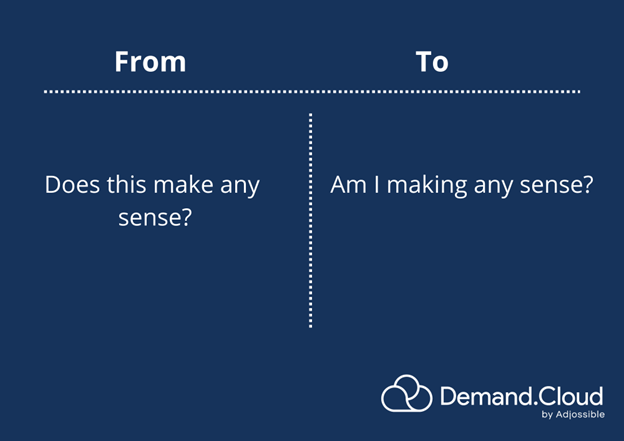
14. Not establishing a sequence of follow-up messages
Don't forget to send a follow-up message after sending a cold email. This will help you establish a connection with the prospect and increase the chances of them responding positively. How to avoid this? Create follow-up emailing campaigns for prospects who remained unresponsive. Insert them into sequences for other purposes even if they do not respond to these follow-ups. Keep trying and resist the urge to give up.
15. Not monitoring the effectiveness of email campaigns
Make sure to track the effectiveness of your email campaigns. This will help you identify and correct any problems that may be causing low response rates. How to avoid this? Use analytics tools to track open, click-through, and bounce rates for your email campaigns. Use this data to make adjustments to your marketing strategy as needed.
16. Grammatical errors
Make sure to avoid grammar errors in your emails. This will make you look amateurish and can deter potential prospects from responding positively. How to avoid this? Be sure to use a spellchecker and check your grammar before you send an email. Get help from a friend or colleague if you are struggling with grammar.
17. Use of full name instead of initials
If you are emailing someone you do not know well, use their full name in your email. This will show that you are taking the time to get to know them better.
18. Sending too many emails in a short period of time
If you send an email to a large number of prospects in a short period of time, your chances of receiving a positive response may be decreased. How to avoid this? Try sending one or two emails per day to a smaller number of prospects. This way, you have more opportunities for each email to be noticed and responded to.
19. Poor design
If your email looks amateurish or poorly designed, it will not be well received. Your prospects will see this as a sign that you do not take them seriously.
20. Emailing at the wrong time of day
It is important to know the right time to send emails in order to maximize the chances of receiving a positive response. The best time to email is during the morning or evening hours.
Conclusion
In order to boost your conversion rate, it’s important to avoid making common cold email marketing errors. By ensuring that your emails have a high open rate, you increase the chances that recipients will see and act on your offer.
Additionally, measuring response and conversion rates can help you determine whether or not your email campaigns are successful. Fortunately, Demand.Cloud can help with all of these aspects of cold email marketing.
Our platform is designed to optimize your emails for maximum opens and conversions, so you can rest assured that your messages are getting through to the right people.
Ready to start seeing better results from your cold email campaigns? Contact us today for more information about how we can help!
